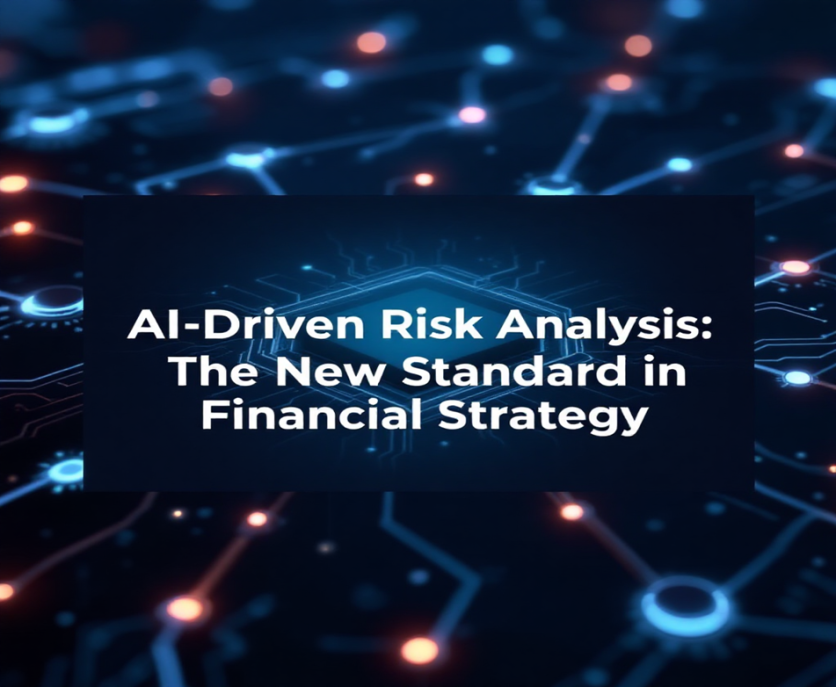
In a rapidly evolving financial landscape, Janardhan Reddy Kasireddy offers insights into how artificial intelligence reshapes risk management and market surveillance. A recognized voice in technology-driven financial regulation, the author explores breakthroughs and barriers to this transformation.
Rethinking Market Oversight with Intelligence
Artificial intelligence (AI) and machine learning (ML) have transformed financial risk analysis, enabling tools that detect fraud with far greater precision than traditional systems. Market regulators no longer depend solely on static rule-based models; today's technologies operate at microsecond speeds, catching manipulation as it happens across global exchanges. These changes reflect a broader shift in regulatory strategy. Algorithms now integrate unstructured data—from transaction logs to trading platforms and online discourse—into adaptive models that evolve in real time. This has significantly boosted detection rates and reduced false positives, making oversight more proactive than ever before.
Beyond Numbers: Recognizing Market Behavior
Rule-based systems detect only what they're programmed to find, while anomaly detection models uncover the unexpected. These unsupervised methods build nuanced market behavior profiles by using autoencoders, support vector machines, and isolation forests.
Any deviation, however novel, is quickly flagged. With rapid data ingestion (latency under 50 milliseconds) and visual anomaly displays, regulators can distinguish fundamental market shifts from manipulation. These systems also evolve through feedback, integrating human insights to sharpen accuracy over time.
Seeing the Unseen: Graph Intelligence in Action
Graph-based analytics help uncover financial crimes across entities and regions. These systems map transaction networks with thousands of nodes, revealing hidden relationships that traditional methods miss. Graph models emphasize relational over transactional data and highlight collusive behavior and key fraud intermediaries. Visual interfaces let analysts navigate datasets efficiently, speeding investigations and improving enforcement.
The Silent Sentinels: Anomaly Detection Systems
Rule-based systems detect only what they're programmed to find, while anomaly detection models uncover the unexpected. Using autoencoders, support vector machines, and isolation forests, these unsupervised methods create detailed market behavior profiles.
Novel deviations are quickly flagged. With fast data ingestion (latency under 50 milliseconds) and visual displays, regulators can separate genuine shifts from manipulation. These systems continuously improve, learning from analyst feedback to enhance precision.
Words That Move Markets: NLP and Sentiment Mapping
Financial fraud isn't always numeric—it's psychological. Sentiment analysis, using natural language processing (NLP), scans media, social chatter, and regulatory reports to extract emotional and behavioral signals.
These systems detect attempts to influence markets through misinformation or manufactured consensus. By linking this textual data with trading patterns, AI reveals manipulation tactics using communication and trading. Combined with transaction monitoring, sentiment analysis boosts detection by 37%.
Empowering Watchdogs with Real-Time Reach
Regulatory bodies have become AI-powered sentinels, tracking billions of transactions across venues in real time. With detection latencies under 50 milliseconds and cross-asset pattern recognition, they can match the pace of modern manipulators.
These platforms use composite scoring to prioritize cases, while visual dashboards deliver insights suited for legal review. AI supports regulators by directing human expertise toward the most critical threats—enhancing, not replacing, oversight.
The Metrics Behind the Momentum
Beyond fraud detection, AI delivers operational efficiencies: up to 40% reduction in compliance costs, 60% faster case resolution, and over 30% improvement in investigation throughput. Cloud-based systems offer scalable monitoring with significantly lower infrastructure demands.
Moreover, early detection translates to real savings, with institutions seeing fraud loss reductions that pay for implementation within the first year. Compliance is no longer a cost burden but a strategic differentiator driven by AI.
Facing the Future: Challenges on the Horizon
Despite its promise, the AI revolution in finance faces key challenges. Explainability remains difficult—complex models often fail to justify their outputs in regulatory or legal contexts, where transparency is essential.
Adversarial threats and privacy issues also persist. As fraud tactics evolve, AI must adapt while complying with global data regulations. Hybrid governance and federated learning provide ways to balance security with regulatory oversight.
In conclusion, AI's growing role in financial risk analysis represents technological innovation and a redefinition of trust, transparency, and regulation in capital markets. From adaptive surveillance to real-time sentiment tracking, the tools described by Janardhan Reddy Kasireddy are more than digital upgrades; they're foundational shifts in maintaining integrity.
As financial systems become more intricate, so must the tools that guard them. In this evolving equation, intelligence, artificial or otherwise, will remain the cornerstone of effective oversight.
ⓒ 2025 TECHTIMES.com All rights reserved. Do not reproduce without permission.





